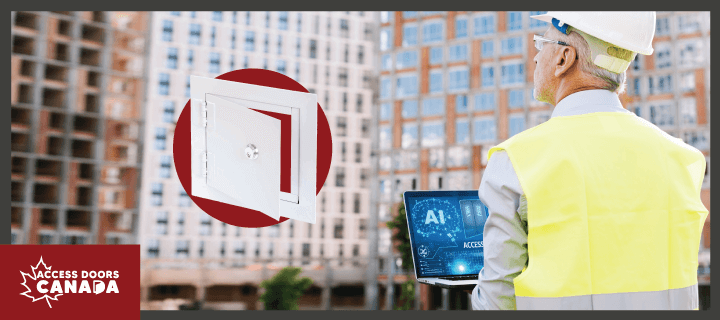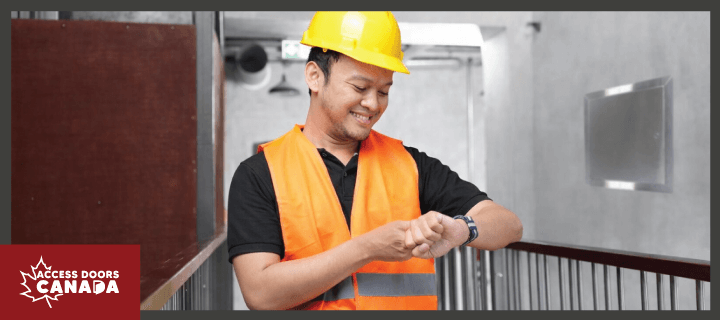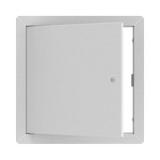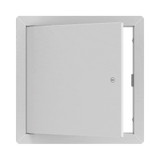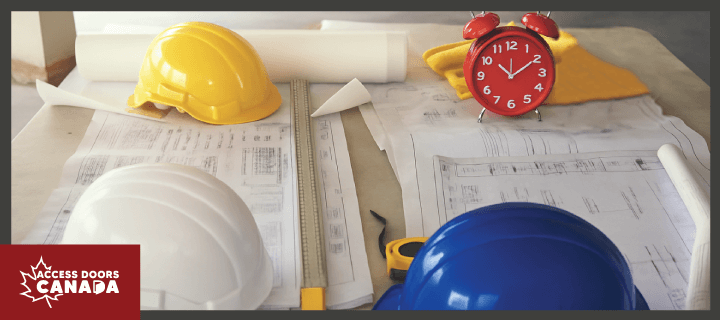How To Avoid Trade Delays by Choosing the Right Access Panel the First Time
Avoid trade delays by reviewing project specifications, confirming Canadian fire code requirements, and selecting an access panel that meets both before installation. Choosing the right panel, such as the ADC-BAC-FRN-PF Fire-Rated Non-Insulated Access Panel With Plaster Bead Flange, ensures proper compliance and seamless integration with plaster surfaces, helping your installation pass inspection the first time.
Trade delays often occur when the wrong access panel is installed. If the panel fails to meet fire ratings or project requirements, inspection failures, costly rework, wasted labour, and frustrated trades result. By carefully matching the panel to your specifications and compliance needs from the start, you eliminate these risks and keep your project on schedule.
In this article, we will guide you through how to choose the right fire-rated access panel for the first time so you can avoid unnecessary setbacks and deliver projects smoothly.
What Causes Trade Delays in Access Panel Installation?
Trade delays happen when the installed access panel doesn’t meet project specifications or Canadian fire code requirements. Since many access panels are placed within fire-rated walls and ceilings, using the wrong panel often leads to failed inspections, rework, wasted labour, and project setbacks.
For example, if a non-compliant panel is installed where a fire-rated one is required, inspectors will fail the installation. Work must stop while contractors remove the panel, order the correct model, and reinstall it, which disrupts schedules and delays other trades.
Incorrect sizing, flange incompatibility, and overlooked specifications also cause installation problems, requiring modifications, replacements, or complete rework. These issues extend timelines and increase costs, making proper panel selection critical.
Need access panels that won’t delay installation? Our custom sizing options are designed to fit right the first time, helping you avoid costly rework and project setbacks. We provide precision-built panels to your specifications, ensuring seamless installation and keeping your project on schedule. Request a quote today.
How Can First-Time Spec Accuracy Improve Trade Coordination?
First-time spec accuracy improves trade coordination by ensuring installations are completed correctly the first time, preventing delays and costly rework. In construction, every trade depends on the one before it, so a single mistake can create a chain reaction that pushes the entire project off schedule.
When the correct panel is selected during the planning stage, drywallers can install it without modifications, inspectors can approve the work on the first inspection, finishing crews can complete walls without additional patching or framing, and electricians and plumbers have reliable access to concealed utilities.
How Do Plaster Bead Flanges Benefit Drywall and Plaster Wall Installs?
Plaster bead flanges benefit drywall and plaster wall installations by creating a smooth, seamless transition between the access panel and the surrounding surface, allowing for a faster, cleaner, and more precise finish. Instead of leaving visible panel edges, the flange is designed to integrate directly into the wall. It lets installers embed it into the surrounding drywall or plaster for a flush, uniform appearance.
This integration significantly reduces finishing work because there is no need for extra framing, patching, or time-consuming adjustments to achieve a clean look. It also minimizes the risk of uneven edges or gaps compromising aesthetics and quality.
As a result, installers can maintain consistent alignment and surface texture across the walls. This is especially important in high-visibility areas where appearance matters, making the right trade coordination access panel essential for achieving a seamless finish.
Key benefits of plaster bead flanges include:
- Seamless Integration – Provides a perfectly flush finish between the panel and the surrounding surface.
- Reduced Finishing Time – Minimizes patching, sanding, and repainting, saving time and labour.
- Enhanced Aesthetics – Delivers a professional, polished look ideal for visible spaces.
- Consistent Quality – Ensures smooth, uniform results across different drywall and plaster surfaces.
Related blog: Drywall for Access Panels - A Guide for Contractors
What Makes the ADC-BAC-FRN-PF a Smart Fire-Rated Access Panel Choice?
The ADC-BAC-FRN-PF Fire-Rated Non-Insulated Access Panel with Plaster Bead Flange is smart because it delivers code compliance, smooth drywall integration, and lasting performance, helping contractors achieve first-time installation accuracy and avoid rework.
Key Features of ADC-BAC-FRN-PF
- Fire-Code Compliant – With a two-hour fire rating that meets U.L. standards, it aligns with Canadian fire code requirements and passes inspections the first time.
- Durable Construction – Built from 16-gauge steel, this plaster bead flange access door offers long-term reliability and excellent resistance to corrosion.
- Seamless Drywall Integration – Its plaster bead flange design bonds naturally with joint compound, creating a clean, polished finish where only the panel door remains visible.
- Convenient Operation – Equipped with a ring or tool key-operated latch and a spring-operated self-closing mechanism, making access straightforward while maintaining compliance with NFPA 80.
- Versatile Locking Options – Available with several lock configurations, including slam latches, mortise locks, and deadbolts, to suit diverse project needs.
- Sustainable Design – The ADC-BAC-FRN-PF contributes to LEED v4 credits and supports environmentally conscious construction practices, making it a trusted fire-rated access panel in Canada.
Related blog: 5 Questions Answered About Fire-Rated Access Doors
FAQs on Fire-Rated Access Panels
1. Do access panels need to be fire-rated?
Access panels must be fire-rated when installed in walls, ceilings, or floors that are part of a fire-rated assembly. Building codes require that any opening within these assemblies match the fire-resistance rating of the surrounding structure.
2. What is the purpose of a fire access panel?
A fire access panel provides controlled entry to concealed utilities, systems, or components within a fire-rated assembly while maintaining the assembly’s required rating.
These panels are designed to comply with code requirements by withstanding high heat for a specified duration, ensuring the wall, ceiling, or floor performance remains consistent with project specifications.
3. Where should a fire panel be located?
Fire-rated access panels should be installed wherever access to concealed systems is required. Common locations include mechanical rooms, hallways, utility closets, bathrooms, kitchens, and service corridors—anywhere ongoing access is needed for inspection or maintenance.
To Sum It Up
Avoiding trade delays by choosing the right access panel is often overlooked but can make a significant difference in keeping your projects on track, reducing costly rework, and ensuring seamless coordination between trades.
At Access Doors Canada, we understand the importance of selecting access panels that match project specifications and meet Canadian building code requirements. Our wide range of fire-rated access panels is designed to help you achieve spec accuracy and seamless installations from the start.
Call us today at +1-888-327-5471 and let our team guide you in choosing the ideal access panel for your project. With the right selection, you can avoid unnecessary delays, improve trade coordination, and keep your construction on schedule.

